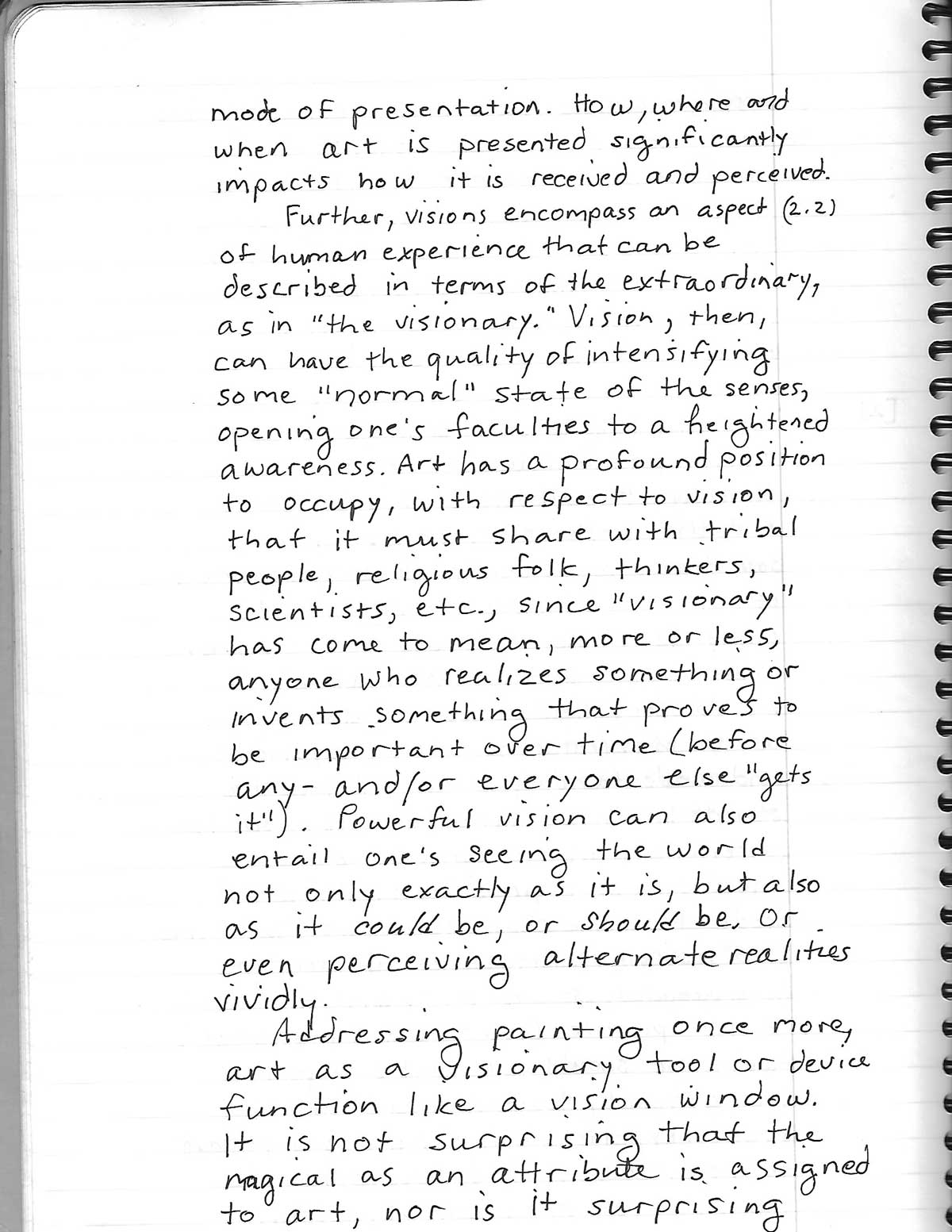mode of presentation. How, where and when art is presented significantly impacts how it its received and perceived.
[2.2]
Further, visions encompass an aspect of human experience that can be described in terms of the extraordinary, as in “the visionary.” Vision, then, can have the quality of intensifying some “normal” state of the senses, opening one's faculties to a “heightened” awareness. Art has a profound position to occupy, with respect to vision, that it must share with tribal people, religious folk, thinkers, scientists, etc., since “visionary” (n.) has come to mean, more or less, anyone who realizes something or invents something that proves to be important over time (before any- and/or everyone else “gets it”). Powerful vision can also entail one's seeing the world not only exactly as it is, but also as it could be, or should be. Or even (still referring to visionary/n.) perceiving alternate realities vividly.
Addressing painting once more, art as a visionary tool or device can function like vision-window. It is not surprising that the magical as an attribute is assigned to art, nor is it surprising
